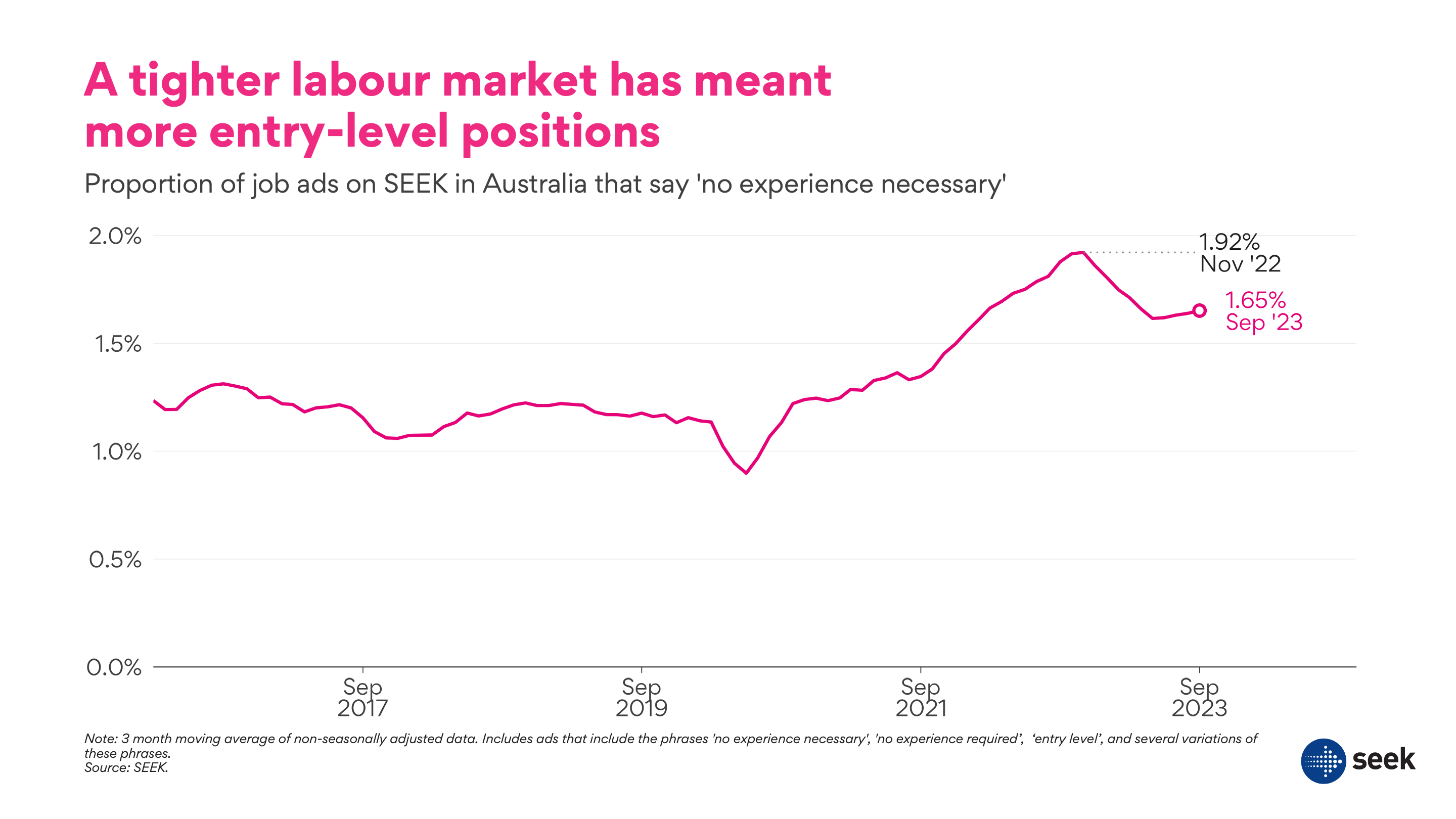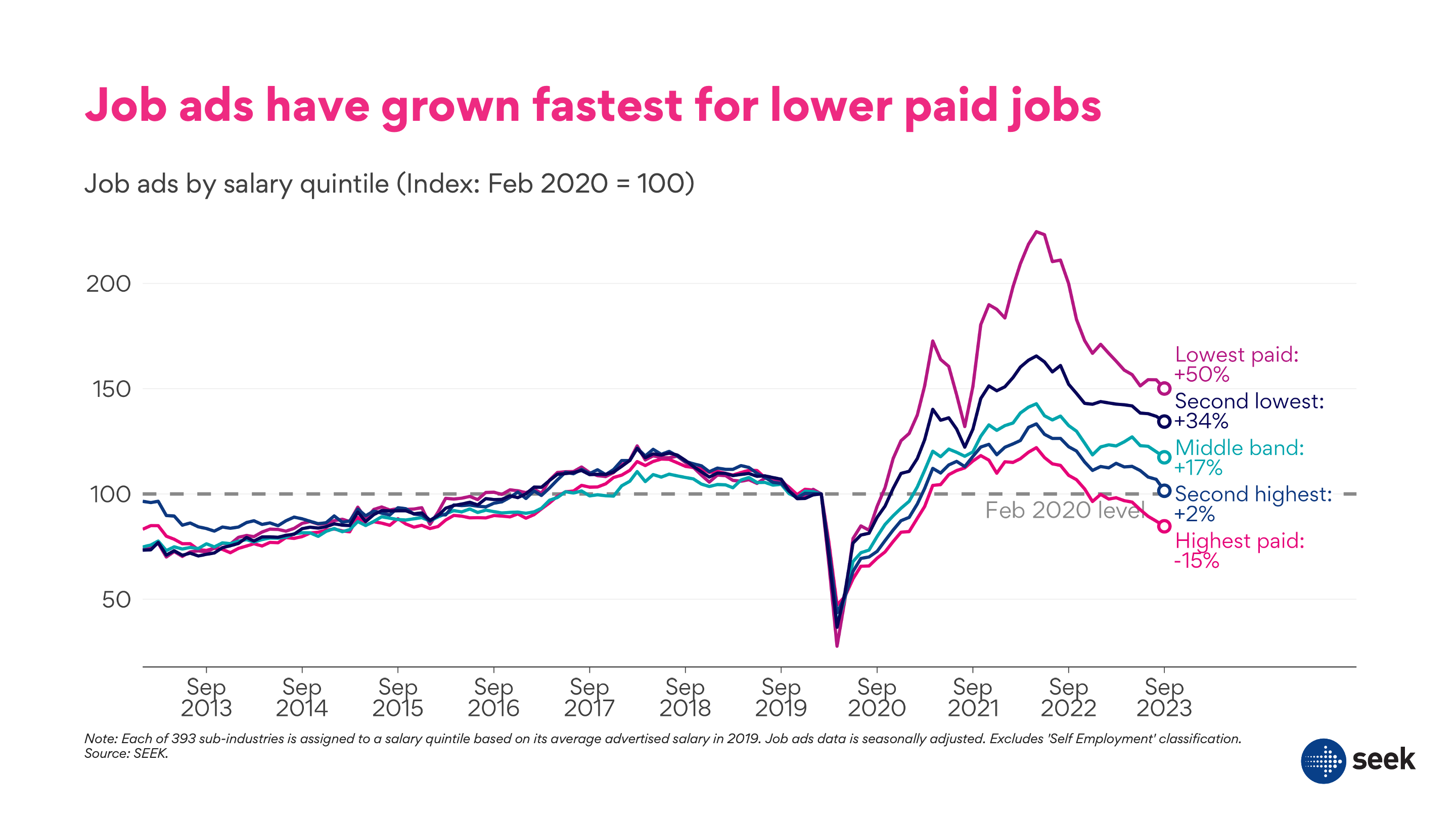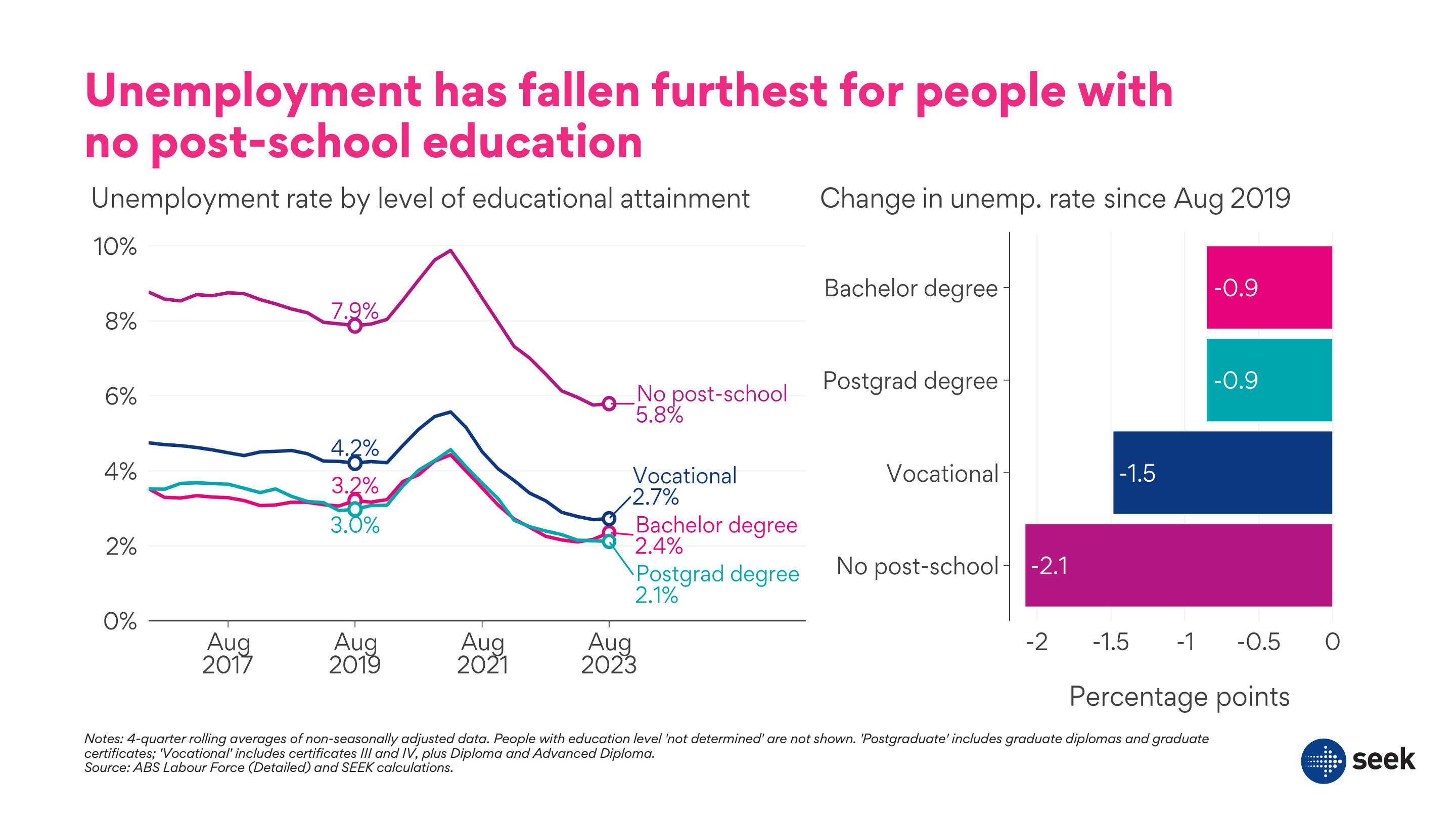A tight labour market creates opportunities for entry-level workers
The first step on the labour market ladder can be the hardest one to take. But a booming labour market makes that first step a little bit easier. In a tight labour market, employers tend to consider job applications they might otherwise have discarded, and they tend to loosen their selection criteria.
We see this playing out in the data at SEEK. Before COVID, around 1.1% of job ads said that no experience was necessary. During the booming labour market of 2021-22, this rose steadily, with 1.9% of job ads requiring no experience by November 2022. Since then, demand for workers has moderated a little, and so has the proportion of jobs requiring no experience, falling to 1.65% in September 2023. The booming market – with plenty of jobs on offer and unemployment at very low levels – has made the past few years a good time to move into the workforce.

A range of research finds that a booming labour market helps disadvantaged Australians the most. This is consistent with SEEK’s data – when labour demand is strong, it tends to be entry-level jobs that boom the most, creating more opportunities for people to get onto that difficult first rung of the job ladder.
Jobs booming at the bottom end
Job ads rose for occupations at all salary levels during the ‘jobs boom’ period – but they rose most of all for the lowest paid bracket of occupations. SEEK had more than double the amount of job ads in these occupations in mid-2022 as in early 2020, before the onset of COVID and lockdowns in Australia.
Lower-paid jobs generally, though not always, require a lower level of educational qualification than those in the higher-paid brackets. Jobs in the lowest paid bracket include occupations like ‘administrative assistants’, ‘warehousing, storage and distribution workers’, and ‘chefs/cooks’. The highest paid bracket includes mostly white-collar professional occupations, such as ‘developers/programmers’, ‘business/systems analysts’ and ‘programme and project management workers’.
Since mid-2022, job ad volumes have moderated for all salary bands, but remain well above February 2020 levels for the lower paid groupings. The number of job ads for the highest paid grouping is slightly below pre-COVID levels.

Strong demand for workers means lower unemployment
The strong demand for workers has pushed the unemployment rate down to a near-50 year low. But because demand for workers has been strongest in lower paid occupations, unemployment has fallen furthest for workers with no post-school qualifications.
The unemployment rate for workers without a post-school qualification was, at August 2023, 5.8%, which is 2.1 percentage points lower than it was in May 2019.[1] The unemployment rate for workers with some post-school qualifications has fallen as well, falling 1.5 percentage points for people with a vocational qualification, and a little less than 1 percentage point for university graduates.
[1] These figures are four-quarter rolling averages of non-seasonally adjusted ABS data.

-ENDS-
Notes
To track the demand for workers by pay level, SEEK job ads are divided into ~400 different occupational groups. The groups are then divided into 5 brackets based on their average advertised salary in 2019.
About Matt Cowgill
Matt Cowgill is SEEK’s Senior Economist, a position he has held since late 2021. At SEEK, Matt focuses on leveraging SEEK’s unique data to develop insights about the labour market.